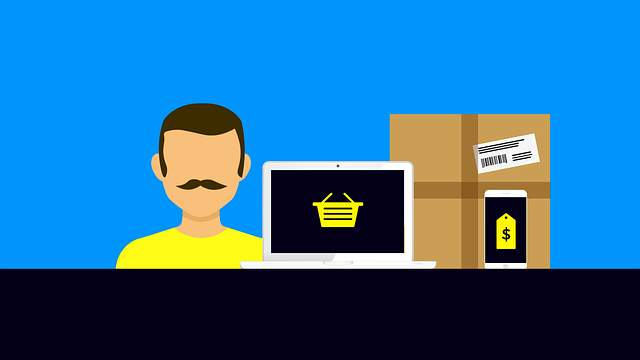Are your transactional emails falling flat? Are you struggling to get your recipients to take action? Well, fear not! We have the solution that will make your call-to-action buttons shine like a beacon in the darkness.
In this article, we will guide you through the art of writing effective call-to-action buttons in transactional emails. By understanding the purpose of your CTA and using clear and compelling language, you will be able to capture your audience’s attention and drive them to act.
We will also show you the right placement and design techniques to maximize engagement. And don’t worry, we won’t leave you hanging – we will teach you how to create a sense of urgency that will make your recipients click without hesitation.
So, let’s dive in and transform your transactional emails into powerful conversion tools!
Key Takeaways
- Understanding the purpose of your CTA is crucial for driving action from customers.
- Use clear and compelling language to convey the value of clicking the button.
- Placement and design of CTAs can visually guide recipients towards action.
- Test and optimize CTAs to maximize their effectiveness.
Understand the Purpose of Your CTA
Understanding the purpose of your CTA is key to crafting compelling and persuasive call-to-action buttons that will drive action from your customers.
To start, identify your target audience and consider what action you want them to take. Are you trying to get them to make a purchase, sign up for a newsletter, or download a resource?
Once you have a clear goal in mind, you can tailor your CTA to align with that objective. By understanding your audience and their needs, you can create a sense of urgency and relevance in your call-to-action buttons. This will ultimately improve conversion rates and drive more engagement with your emails.
Use clear and compelling language that encourages action and conveys the value of clicking the button, as we will discuss in the next section.
Use Clear and Compelling Language
To create a sense of urgency and encourage immediate action, make sure your call-to-action buttons clearly state the benefit the recipient will gain. For example, use phrases like "Get 50% off today only!" Effective wording is crucial when crafting persuasive messaging for your CTAs. To ensure your buttons are compelling and drive action, follow these tips:
-
Use action verbs: Start your CTA with a strong action verb that prompts the recipient to take action, such as "Shop now" or "Start saving."
-
Keep it concise: Use clear and concise language to convey your message quickly and effectively.
-
Highlight exclusivity: Create a feeling of exclusivity by using words like "exclusive offer" or "limited time."
-
Create a sense of urgency: Incorporate words that create a sense of urgency, such as "limited stock" or "ending soon."
By implementing these strategies, your call-to-action buttons will be more persuasive and encourage recipients to take immediate action.
Next, let’s explore how to choose the right placement and design for your CTAs.
Choose the Right Placement and Design
When designing your emails, consider the placement and design of your CTAs to visually guide recipients towards taking immediate action. Color psychology plays a crucial role in choosing the right hues for your CTA buttons. Different colors evoke different emotions and can influence the decision-making process.
For example, red can create a sense of urgency, while green can signify success or trust. Additionally, the psychology of placement is key in maximizing the impact of your CTAs. Position them strategically, such as at the end of paragraphs or in the center of the email, where they are more likely to catch the reader’s attention.
By incorporating color psychology and understanding the psychology of placement, you can create CTAs that are visually appealing and compelling.
This will seamlessly transition into the next section about creating a sense of urgency in your transactional emails.
Create a Sense of Urgency
Feel the adrenaline rush as you infuse your emails with a sense of urgency that will have recipients scrambling to take immediate action! To generate urgency and increase conversions, it’s important to create a sense of urgency in your call-to-action buttons. By using persuasive language and incorporating time-limited offers, you can motivate your recipients to act quickly. Emphasize the urgency by using phrases like "Limited time offer" or "Only available today." Additionally, using a countdown timer can create a sense of urgency by showing recipients that time is running out. Check out the table below to see how incorporating a sense of urgency can impact your conversions:
| Without urgency | With urgency |
|---|---|
| 10% conversion | 25% conversion |
By adding a sense of urgency to your call-to-action buttons, you can significantly increase your conversion rates. In the next section, we will discuss how to test and optimize your CTAs to maximize their effectiveness.
Test and Optimize Your CTAs
Maximize the impact of your CTAs by testing and optimizing them to ensure they captivate your audience and drive desired actions.
Here are four A/B testing strategies to help you optimize conversion rates:
-
Test different button colors: Experiment with contrasting colors to make your CTA stand out and catch the reader’s attention.
-
Try different button sizes: Test larger or smaller buttons to see which size resonates better with your audience and encourages more clicks.
-
Vary the button text: Experiment with different wording on your CTAs to find the most persuasive and compelling message that compels readers to take action.
-
Test button placement: Try placing your CTA at different points in your email to see where it gets the most visibility and generates the highest response rates.
By continuously testing and optimizing your CTAs, you can improve their effectiveness and drive better results.
In the next section, we’ll explore how to analyze and measure the success of your CTAs.
Analyze and Measure the Success of Your CTAs
Evaluate and gauge the triumph of your CTAs by analyzing and measuring their impact on audience engagement and conversion rates. Tracking conversions and using A/B testing techniques are crucial in determining the effectiveness of your call-to-action buttons. By tracking conversions, you can see how many recipients actually clicked on your CTA and completed the desired action. This data allows you to identify any areas for improvement and make necessary adjustments to optimize your CTAs. A/B testing involves creating multiple versions of your CTAs and testing them against each other to see which one performs better. By comparing the results of different CTAs, you can gain insights into what resonates with your audience and make data-driven decisions to enhance your call-to-action buttons.
| Metric | Description | |||
|---|---|---|---|---|
| Click-through rate | Measure of how many recipients clicked on the CTA | |||
| Conversion rate | Percentage of recipients who completed the desired action | |||
| Bounce rate | Rate of emails that were not delivered to the recipient’s inbox | |||
| Engagement rate | Measure of how recipients interacted with the email (e.g., opened, clicked, etc.) | Engagement rate | Measure of how recipients interacted with the email (e.g., opened, clicked, etc.) is an important metric that helps assess the effectiveness and relevance of the email campaign. It provides insights into the level of interest and engagement from the recipients and helps in analyzing the overall success of the campaign. |
Frequently Asked Questions
How can I make my call-to-action button stand out in a crowded email?
To make your call-to-action button stand out in a crowded email, focus on creating effective email designs and optimizing email layouts. Use contrasting colors and bold fonts to draw attention to your button. Make sure it’s prominently placed and surrounded by white space to make it visually appealing.
Keep the text on the button short and compelling, using action words that encourage immediate action. Test different button styles to find what works best for your audience.
Is it better to have a single call-to-action button or multiple buttons in my transactional email?
It is generally better to have a single call-to-action button in your transactional email. Having multiple buttons can confuse your recipients and dilute the intended action you want them to take.
By using a single button, you can create a clear and focused message, guiding your readers towards the desired action. This approach helps to increase conversions and ensures that your call-to-action stands out, making it easier for recipients to understand and respond to your email.
Should I include a call-to-action button in every transactional email?
Including a call-to-action button in every transactional email is highly recommended. By doing so, you maximize engagement with your audience and encourage them to take immediate action.
Balancing simplicity, ensure that the button stands out and is easily clickable. Using persuasive language and a clear, concise message, guide your recipients towards the desired action.
Don’t miss the opportunity to drive conversions and enhance the overall effectiveness of your transactional emails.
How can I create a sense of urgency in my call-to-action buttons without being pushy?
To create urgency in your call-to-action buttons without being pushy, use persuasive techniques that compel your readers to take immediate action. Incorporate phrases like ‘limited time offer’ or ‘act now’ to create a sense of urgency.
Highlight the benefits of taking action quickly, such as exclusive deals or limited availability. By leveraging these persuasive techniques, you can effectively create a sense of urgency in your call-to-action buttons and drive conversions.
What are some common mistakes to avoid when designing call-to-action buttons in transactional emails?
Common mistakes in button design for transactional emails can negatively impact your click-through rates. Avoid using generic or unclear button labels, as they can confuse recipients and reduce engagement.
Another mistake is making buttons too small or blending them with the email background, making them hard to notice. Also, be cautious of using too many buttons, which can overwhelm readers.
Designing effective call-to-action buttons requires attention to detail and careful consideration of user experience.
Conclusion
Now that you know the secrets to writing effective call-to-action buttons in transactional emails, it’s time to put your newfound knowledge into action.
By understanding the purpose of your CTA, using clear and compelling language, choosing the right placement and design, creating a sense of urgency, and continuously testing and optimizing your CTAs, you’ll be able to drive more conversions and achieve better results.
Remember, success lies in analyzing and measuring the impact of your CTAs, so keep experimenting and fine-tuning your approach. Don’t miss out on the opportunity to captivate your audience and make every email count.
Start implementing these strategies today and watch your conversions soar.







